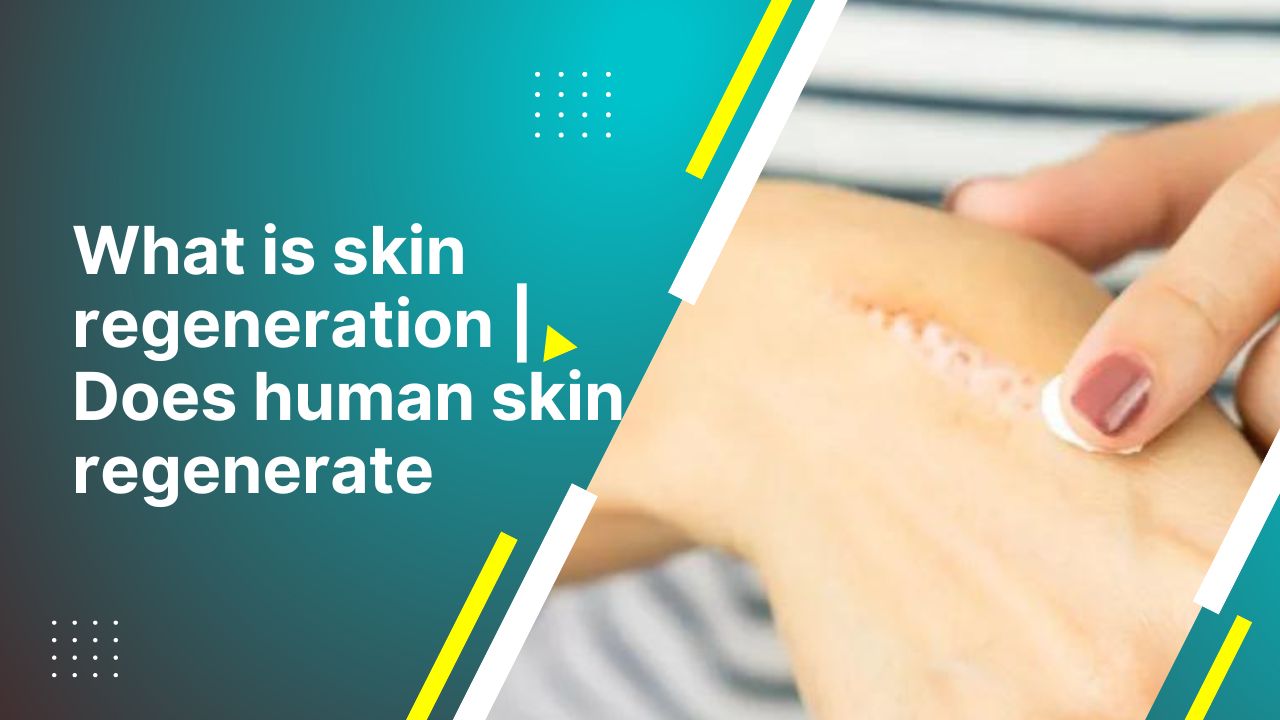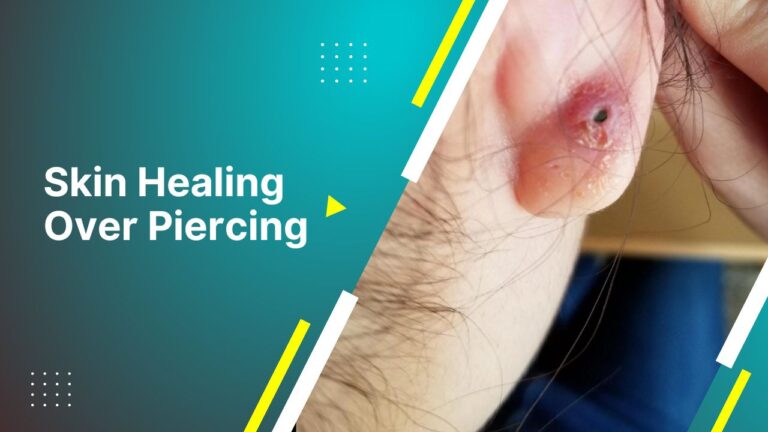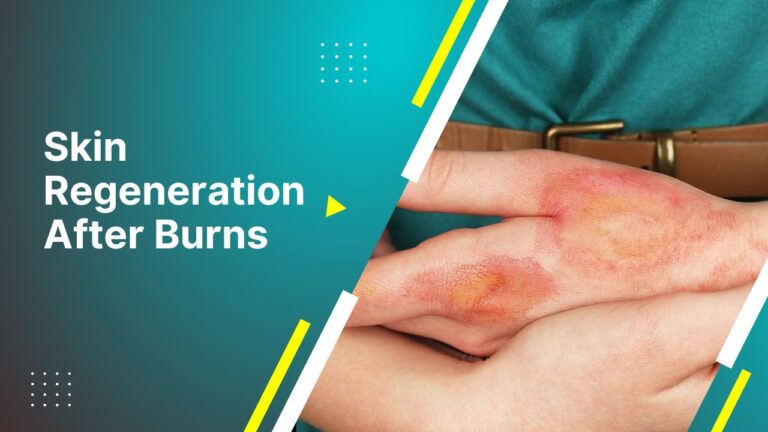On a deeper level, your cells regularly shed, exposing new, freshly created skin cells underneath. Because of this, scars and imperfections may gradually disappear over time.
You can take better care of your skin while it regenerates if you comprehend the science underlying the life cycle of your skin. Additionally, it might offer you a fresh shine and speed up the natural regeneration process of your skin. Here is a quick evaluation of what you need to know about skin regeneration.
What is skin regeneration?
Research reveals that skin regeneration is the process of replacing damaged tissue with freshly formed tissues. Stem cells are responsible for preserving the epidermis in the skin’s deepest layers. These epidermal stem cells produce daughter cells that rise higher to reach the skin’s surface.
During this process, keratin-producing cells undergo several biochemical and morphological changes that lead to the development of the different skin layers.
How does the human skin regenerate?
The epidermis, or outer layer of skin, contains cells that are continually replenishing themselves. The epidermis is essentially exfoliated (shed) during this rejuvenation process.
Book A Consultation With Dr Tarek Bayazid
Installment Plan Available
However, the dermis, which refers to the deeper layers of skin, does not experience this cellular turnover and, as a result, does not replenish itself. Thus, foreign objects placed in the dermis, such as tattoo inks, will endure.
What is a Skin regeneration Cycle?
When a new skin cell forms in the epidermis’ lowest layer and moves towards the skin surface, we call this process a skin cycle. Once the skin cell reaches this stage of development, it eventually peels off.
Age, hormones, skin health, stress, and other factors can all affect a person’s skin cycle, which can change from person to person. People aged 19 to 21 can anticipate the process to take 14 to 21 days, compared to middle-aged individuals who anticipate it to take 28 days. In our 40s and 50s, this skin cycle shortens to 45-60 days as we age. It can further slow to 60-90 days in our 50s and 60s.
See related: Skin Healing Over Piercing
What Slows Down Skin Regeneration?
There are a variety of factors that may influence how fast your skin regenerations processes take. Below are six of the most common reasons that affect most people.
Age
Everyone who has ever been in the beauty industry is aware that aging has an impact on every aspect of the body, including the structure and functionality of the skin. Aging causes everything to slow down, even the stages of skin regeneration.
As you age, your skin becomes thinner, and your body exhibits a reduced inflammatory response, making it more susceptible to injury and more likely to heal slowly after an accident.
Nutrition
A proper diet is essential for optimum skin regeneration. A wound won’t heal well if you don’t get enough nutrients for cell development and repair.
Poor nutrition may ultimately lead to obesity. This increases the risk of infection for a wound as it will take longer to heal. Anyone who is 20% or more over their optimal body weight is prone to suffer from this.
Repeated Trauma
Your body’s defense mechanisms will be constrained and cause a sluggish rate of wound healing if you have numerous wounds or a severe injury such as surgery.
Skin Moisture
For skin to thrive, there must be enough liquid and moisture. You may be at risk for skin lesions, infections, and thickening if you have dry skin, which is particularly frequent in older people. All of these conditions will slow skin regeneration.
Maintaining an ideal amount of skin moisture is essential for skin regeneration and repair. Still, on the other hand, if the skin is overly wet, you run the danger of developing maceration or infections.
Chronic Conditions
Chronic disorders directly impact the body’s innate capacity to regenerate. Cardiovascular disorders are among the most harmful, although diabetes and immune system disorders can also hinder granulation tissue formation.
Medication
The skin cycle process might be adversely affected by prescription drugs. For instance, aspirin and ibuprofen, which are available over-the-counter, might interfere with the inflammation stage of cell remodeling. Immunosuppressants may impair the immune system and increase the risk of infection, whereas anticoagulants can interfere with blood clotting.
Learn more about Skin Regeneration Essential Oils
What is the difference between skin regeneration and skin repair?
Unlike skin repair, which includes “patching” rather than “restoring,” regeneration entails the restoration of tissue components. Typically, scar tissue is not connected to skin regeneration.
The proliferative ability of the cells, the integrity of the stromal framework, the length of the damage, and the inflammatory response all have a role in how much regeneration vs repair takes place. Let’s take a deep dive into each of them separately to have a better understanding of the difference.
Skin regeneration
Over time, new scientific findings have revealed the process of cutaneous regeneration. Long thought to be limited to epidermal keratinocytes and dermal fibroblasts, regeneration is now understood to be a dynamic, highly calibrated process involving several systems, including the cutaneous, vascular, and immunological ones.
The fibroblast, which directs the regenerating process by secreting various growth factors, links these three fundamental biological foundations. For an ideal and comprehensive regeneration impact, this complex regenerative influences the actions of keratinocytes, fibroblasts, endothelium, and immune cells favorably.
Skin repair
The epidermal layer damaged by a burn or wound is renewed during epidermal healing, known as reepithelialization. Wound closure, or restitution of the epidermal continuum, is the goal of skin repair. This allows the newly differentiated epidermis to perform one of the skin’s most essential tasks, acting as a physical, chemical, and bacterial barrier.
How Long Does it Take for Your Skin to Regenerate?
Your skin will frequently alter during your life, for better or for the worse. It will repair itself every 27 days or so. The health and vitality of this protective organ must be maintained through proper skin care.
Conclusion
Regeneration or repair are two ways to bring a skin wound close. The good news is that there are plenty of cosmetic products and procedures that may help increase the rate of skin regeneration. Don’t let poor skin regeneration put you down. Seek professional help from certified plastic surgeons around you.
Dr.Tarek Bayazid specializes in skin rejuvenation and body contouring. He is a leading plastic surgeon in Dubai renowned for his superb work, particularly in body sculpting and face rejuvenation. Additionally, Dr. Tarek is a Member of the most prestigious Plastic Surgery Societies worldwide such as the American Society of Plastic Surgeons (ASPS), the International Society of Aesthetic Plastic Surgery (ISAPS)the Emirates Plastic Surgery Society (EPSS), and the Melbourne Advanced Facial Anatomy Course (MAFAC).






